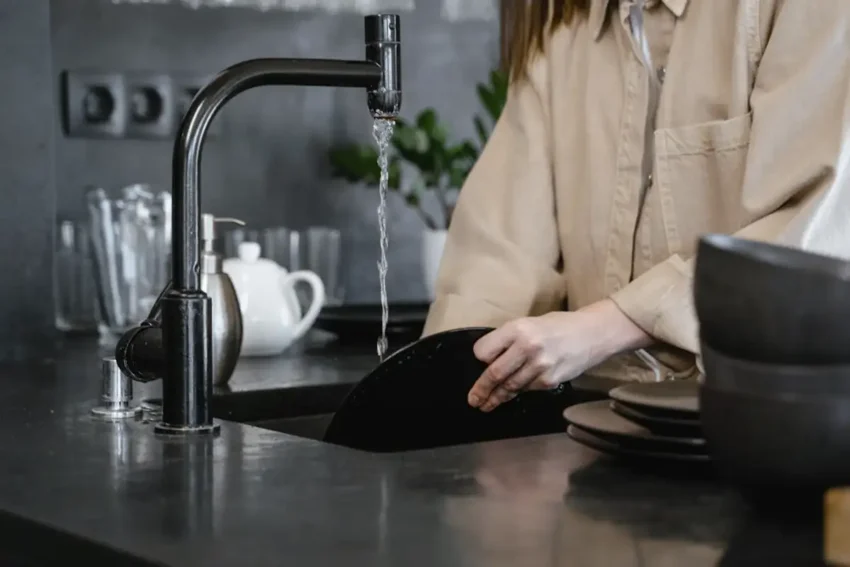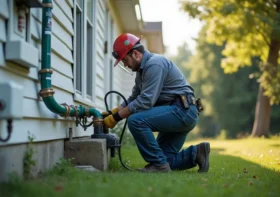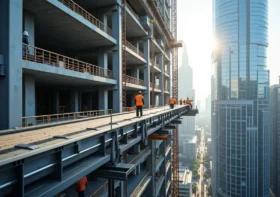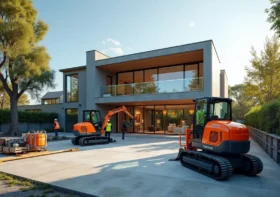Design Below the Surface: Plumbing as the Unsung Hero of Every Home

When people talk about design at home, they often mean bold wallpaper, sleek furniture, or the latest kitchen finishes. Yet the most important design work usually happens where no one looks. Plumbing is one of those hidden systems that rarely gets credit but quietly shapes how a house feels, functions, and supports everyday life. Without it, style fades quickly when comfort disappears.
It is here that the idea of design takes on a deeper meaning. A well-thought-out plumbing system is not just about pipes and drains. It is about flow, convenience, and peace of mind. That is why knowing there is a 24/7 emergency plumber available when things go wrong is part of the design story too. Good plumbing ensures that the practical side of living never interrupts the beauty of the spaces we create.
Contents
Why Plumbing Is Design in Action
Design is often described as problem-solving made visible. Plumbing fits that definition perfectly, even though the results stay out of sight. Every pipe, joint, and valve is planned with a purpose. Water must travel in specific ways, waste must exit cleanly, and systems must be built to last. This behind-the-scenes order reflects the same precision you might see in architecture or product design.
When plumbing works well, you do not notice it. That invisibility is a mark of good design. The shower runs at the right pressure, the sink drains quickly, and the washing machine cycles without flooding the floor. All of it happens because someone mapped out the network long before the walls were painted.
The Flow Principle
One of the most important elements of both plumbing and design is flow. Just as a room needs circulation for people to move comfortably, plumbing needs clear, efficient routes for water. Flow is what makes a bathroom functional and a kitchen practical. It also saves resources by reducing waste and preventing strain on the system.
A poorly planned layout can make even a stunning home stressful. Imagine waiting minutes for hot water to arrive or dealing with constant blockages. These frustrations show how flow, when ignored, turns design from a pleasure into a headache.
Form and Function Go Hand in Hand
The famous design principle that form should follow function applies perfectly to plumbing. Every visible tap or elegant fixture is only as good as the system supporting it. A beautiful faucet cannot hide the frustration of a leaking pipe or low water pressure.
This connection between appearance and performance reminds us that design is not only what you see. It is also what you feel and rely on every day. Plumbing proves that good design lives in the details, whether or not they are visible.
Plumbing and Resilience
Great design is built with resilience in mind. Things break, systems fail, and unexpected events happen. Plumbing design anticipates these possibilities. Access panels, shut-off valves, and smart layouts ensure that issues can be managed quickly.
This is why professional planning matters so much. A home with thoughtful plumbing design is less likely to face major disruptions. And if problems do happen, the design allows for faster, safer repairs. Resilience is what keeps the daily rhythm of a household from falling apart when something goes wrong.
Lessons Plumbing Teaches About Design
Looking at plumbing as design offers lessons that reach far beyond the bathroom or kitchen.
- Balance matters. Just as water systems balance pressure, great design balances aesthetics with usability.
- Flexibility is key. Plumbing often adapts to tight spaces, much like design adapts to user needs.
- Details count. Small components in plumbing, like seals and fittings, mirror how tiny design choices shape an entire experience.
These lessons remind us that functional systems are not separate from creativity. They are creativity at work in a different form.
Plumbing as Invisible Comfort
Perhaps the best way to see plumbing as design is to think about what happens when it fails. Suddenly, the invisible becomes the center of attention. A burst pipe or a clogged drain disrupts everything else, no matter how beautiful the home looks.
By contrast, a well-designed plumbing system provides comfort without demanding recognition. It works silently, letting the more visible layers of design shine. This quiet support makes it one of the most underrated design elements in any space.
At its heart, both plumbing and design share the same goal: to make life smoother, safer, and more enjoyable. When these elements are aligned, homes become not only beautiful but also dependable.
The next time you admire a piece of furniture or a perfectly painted wall, take a moment to appreciate the plumbing behind the scenes. It may not be glamorous, but it is design in one of its purest forms—solving problems so well that you hardly know they exist.
Conclusion
Plumbing is more than utility. It is design that works quietly below the surface, creating the conditions for comfort and beauty above it. Without thoughtful planning, even the most stylish home becomes inconvenient. By recognizing plumbing as part of the design conversation, we give credit to an unsung hero that keeps daily life flowing.



